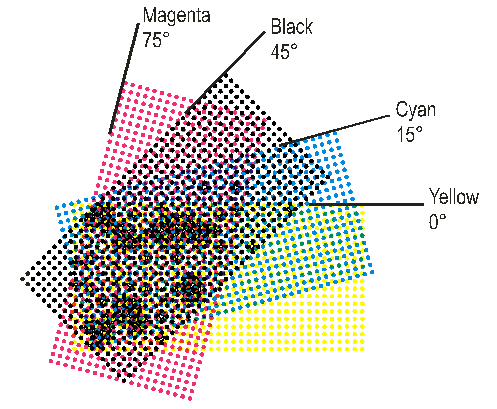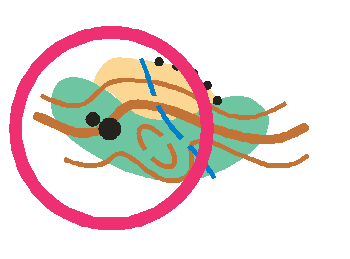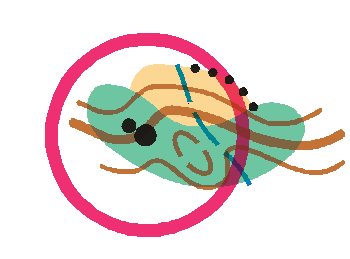3.5.2 Four colour offset printing
Four-colour printing is the traditional way of printing most colour work, maps have been one of the main exceptions due to the fine line requirements.
The four colour printing method uses the three basic colours of the subtractive colour model: cyan, magenta and yellow. In theory a mix of 100% of cyan, magenta and yellow produces black colour, but in reality it will be more of a dark brown. Therefore black is normally printed as a separate colour. After these four colours the model is often referred to as CMYK.
Although four-colour printing requires fewer and standardized inks, the main advantage of using this process is that it allows the inclusion of colour photographs and full colour advertisements at no extra cost.
The use of digital techniques to produce four colour separations has now made it possible to make high quality orienteering maps using four colour printing. This is not the suggested method of printing orienteering maps, it is an alternative. This method will only be acceptable when line quality, legibility and colour appearance are of the same quality as the traditional spot colour printed map.
However, the mapmaker has to take into consideration the limitations and potential errors of this method. The reproduction of very thin lines (contours) requires special attention.
Colours
The following table lists the CMYK combinations for the equivalent PMS colours recommended for orienteering maps:

Screens
The colour mixture can be done either with traditional printing screens or special printing screens with randomly distributed dots called stochastic screens. The latter screens will improve legibility and make fine lines such as contours more readable, and is therefore highly recommended.
Screen frequency
Traditional screens should have a screen frequency of at least 60 lines /cm. For stochastic screens the frequency will vary randomly.
Angles
To avoid the unwanted moiré effects with traditional printing screens 4-color orienteering maps should always use the conventional angle set. In proper stochastic screens the dots are placed randomly, so angles are irrelevant and unwanted moiré effects will not appear.
| Colour
| Angle |
| Cyan | 15° |
| Magenta | 75° |
| Yellow | 0° |
| Black | 45° |
|
 |
Printing order
The appearance of colours is dependent on the printing order. In 4-colour orienteering map offset printing the printing order should always be:
- Yellow
- Cyan
- Magenta
- Black
Overprinting
With traditional spot colour printing inks are physically printed on top of each other. It is possible to simulate the same with four-colour printing technique, and this optimises legibility and gives a colour appearance as close to traditional spot colour printing as possible. To achieve this effect in four-colour offset printing, information underlying (in the spot colour printing order described in 3.5.1) a specific spot colour should not be blocked out (erased / printed white) completely, but should be blended in to produce a new colour for printing.
The use of overprinting effect with 4-color offset printing is recommended for the following solid colors:
- 100 % Violet
- 100 % Black
- 100 % Brown
- 100 % Blue
- 100 % Green
Illustration: Contours in dense vegetation printed in 4-colours. Overprinting effect in the right illustration.


















